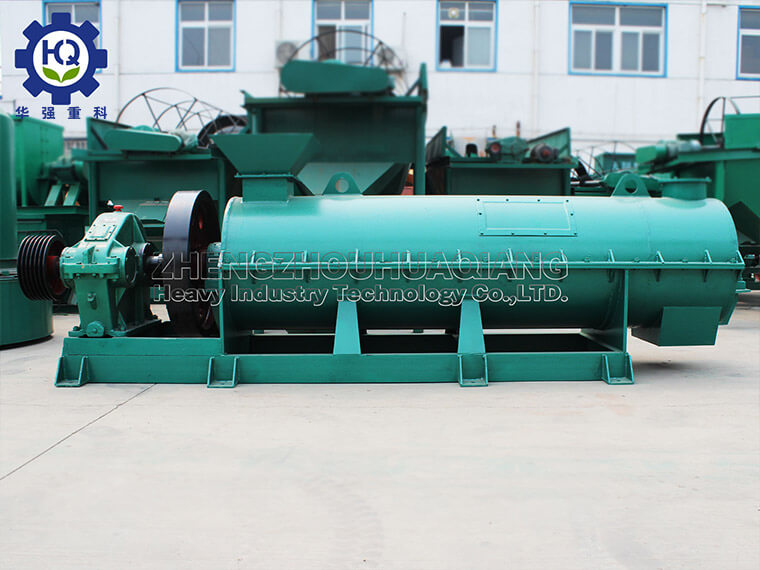The granulated granules are uniform in size, and the granulation rate can reach more than 97%, making it the best equipment for the granulation of organic fertilizers, inorganic fertilizers, and compound fertilizers. The new two-in-one organic fertilizer granulator can not only produce organic fertilizers but also produce low-energy-consuming and high-quality organic or inorganic compound fertilizers.
Equipment features:
1. The machine is designed with novelty, a unique structure, wide raw material applicability, large production capacity, high operational reliability, and high granulation efficiency.
2. The granules processed by the new two-in-one organic fertilizer granulator have high strength. Compared to several granulating devices such as pan granulator and roll extruder, the two-in-one organic fertilizer granulator solves the strength issue and enhances the strength of the organic fertilizer granules.
3. It saves labor and is highly efficient. Compared to double roller press granulator, disc granulator, and flat die granulator, the new two-in-one organic fertilizer granulator has lower requirements on manual labor. After the machine is running, it can basically achieve unattended operation.
4. The operation is simple and requires little physical effort. The new two-in-one organic fertilizer granulator is easy to operate, and there is no need to worry about manual technical issues. The granulation speed is fast, and the work can be continuous without interruption.
5. The granulator’s granules are well-shaped and round, and the size difference of granules can be controlled according to needs.
6. Due to the good effect of granules, the amount of returned material is also very small. Compared with other equipment, the return rate of the new two-in-one organic fertilizer granulator is basically controlled between 2% and 3%, while some other fertilizer granulator machines have a return rate of up to ten percent or more, which can be said to be negligible.
7. The raw material applicability is wide. Various manure, animal feces, decaying meat; plant waste like wheat bran dregs, straw, branches, wood chips, etc.; as well as industrial organic residue like distiller’s grains, feed residues, fungal residues, etc.; domestic waste, sludge, etc., can all be granulated.
Therefore, the new two-in-one organic fertilizer granulator not only has wide applicability, simple operation, and saves labor in production but also has excellent granulation effects, making it a fertilizer granulator with unique advantages






